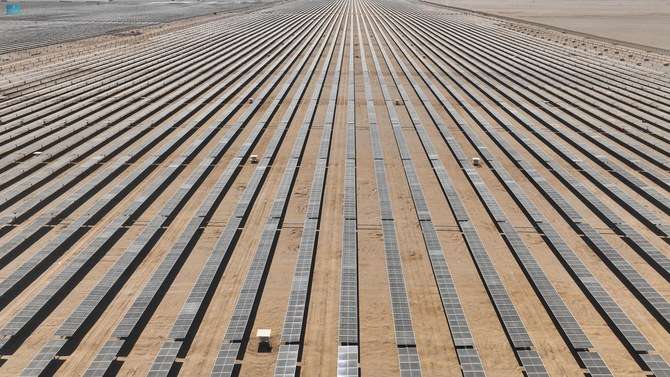In Short : Renewable energy capacity has the potential to more than double by 2030. This optimistic outlook suggests a significant global shift toward cleaner and more sustainable energy sources, reflecting a growing commitment to combatting climate change and achieving renewable energy goals.
In Detail : China is running away with clean energy expansion, with the E.U. and U.S. following far behind
Renewable energy is on track to more than double worldwide by 2030, but more financing and policy support is needed to meet the goal of tripling clean power that was agreed to last month at global climate talks.
Renewable power capacity is expected to grow by 7,300 gigawatts through 2028 under countries’ current policies and will overtake coal as the leading source of electricity globally by 2025, according to a new analysis by the International Energy Agency. That would mark a 33 percent increase over 2022 projections, led overwhelmingly by surging renewable energy generation in China.
But that pace falls short of reaching the 11,000 GW needed by 2030 to triple renewable capacity, highlighting what analysts say is a need for stronger incentives and increased investment in carbon-free power, particularly in less developed countries that are poised to see major economic and population growth.
“The most important challenge for the international community is rapidly scaling up financing and deployment of renewables in most emerging and developing economies, many of which are being left behind in the new energy economy,” IEA Executive Director Fatih Birol said in a statement. “Success in meeting the tripling goal will hinge on this.”
Financing emerged as a major sticking point during the U.N. climate talks in Dubai, United Arab Emirates, last month. Several officials from emerging economies that are rich in oil and gas argued that the agreement to shift away from fossil fuels should be accompanied by money and resources to support the transition.
Yet getting private sector backing for renewable energy projects has been difficult because many emerging economies are considered risky investments.
Renewable energy capacity grew 50 percent in 2023 to more than 500 gigawatts, the fastest rate of growth in more than 20 years, according to the IEA.
The expansion happened almost exclusively among the world’s 20 largest economies, with China far out in front. In fact, China commissioned more renewable power last year than all other countries combined did in 2022, and it’s expected to account for around 60 percent of renewable power additions in the next five years, the IEA said.
“The level of deployment reached in 2023 makes it clear that a tripling of renewables is entirely achievable,” said Dave Jones, a program director at Ember, a global energy think tank. “[Almost] 90 percent of the upgrade in the IEA’s forecast to last year came as China’s renewable forecast was boosted upwards.”
Tripling clean power, however, will require large investments by other countries. That can be thwarted by recent fossil fuel developments.
In much of Southeast Asia, for example, relatively new coal- and gas-fired power plants serve as barriers to the faster build-out of renewables, since shifting away from those plants could leave those countries with stranded assets, the analysis said.
Closing the gap will be even harder in many emerging and developing economies, particularly in Africa, where hydropower makes up the bulk of their renewable sectors.
“This implies that solar PV and wind must grow significantly more than threefold by 2030 to meet the global tripling goal,” the IEA said.
Efforts to restructure debt in sub-Saharan Africa and pool low-cost financing will be needed to dramatically increase renewable capacity in the region, it notes.
The lowest amount of new renewable capacity is expected in the Middle East and North Africa, with just 62 GW of new capacity anticipated through 2028.
The IEA revised China’s renewable energy forecast up 64 percent over 2022. The Asia-Pacific is expected to see its renewable capacity increase 73 percent through 2028, led by India.
Strong growth is also expected in the U.S., European Union and Brazil — all major carbon emitters.
“In the United States, the Inflation Reduction Act has acted as a catalyst for accelerated additions despite supply chain issues and trade concerns in the near term,” the analysis says.
The U.S. is expected to see its renewable energy capacity more than double from 2023 to 2028, making it the third-largest growth market after China and the European Union. A separate update Tuesday from the U.S. Energy Information Administration projects that solar power will lead growth in electricity generation over the next two years, boosting solar’s share of total power generation to 7 percent.
But there are differences between solar and wind. While solar capacity accounts for three-quarters of renewable expansion, wind power additions face various hurdles ranging from permitting delays to rising interest rates.
Economic headwinds have led to the canceling of some projects, with the wind industry in Europe and the U.S. particularly hard hit. As a result, the IEA said its expectations for wind power expansion outside China is 15 percent lower than previously forecast through 2028. America’s offshore wind forecast was revised down 60 percent.
The IEA also notes that China will continue to dominate global production of solar panels, despite an increase in manufacturing in the U.S. and India.

